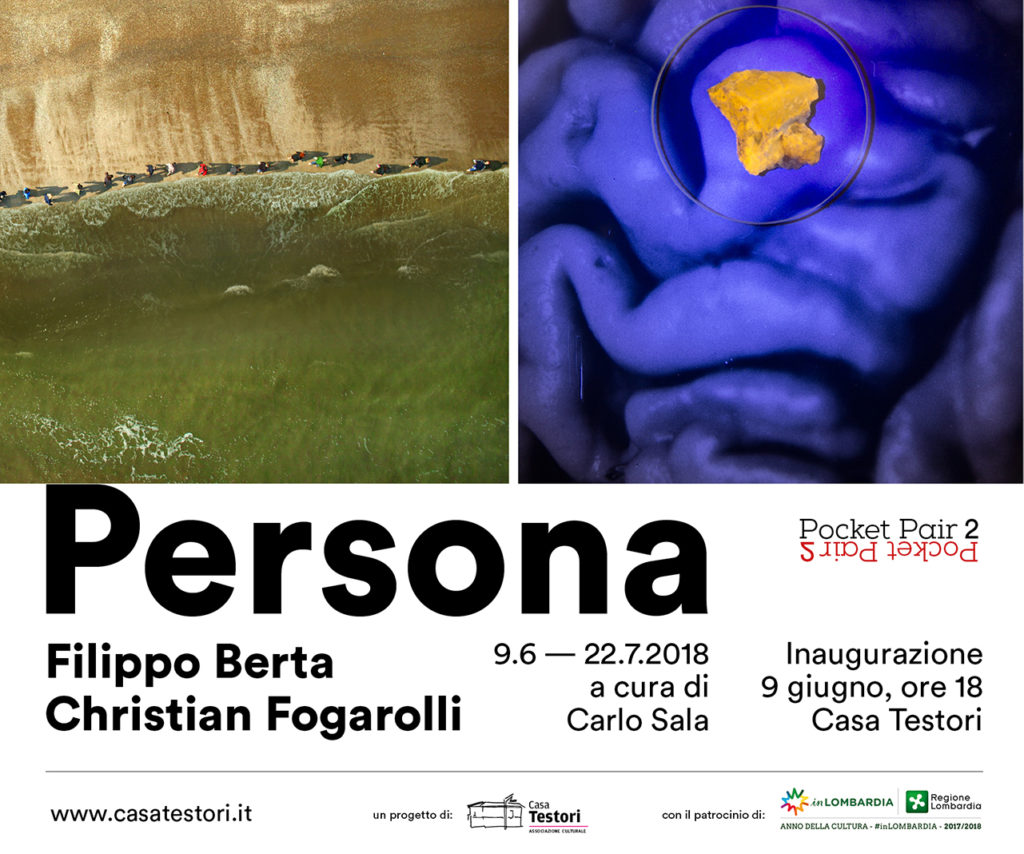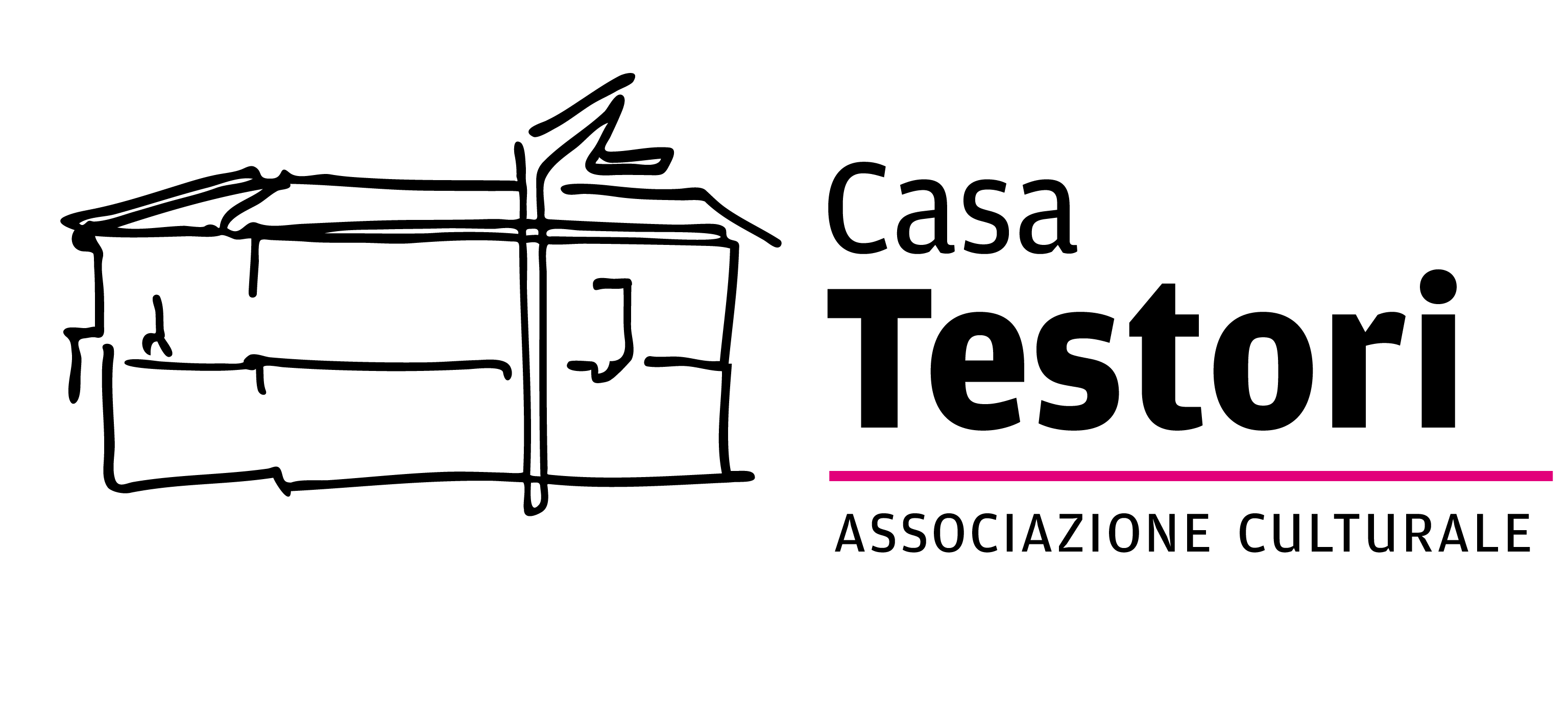PERSONA
Filippo Berta and Christian Fogarolli
Curated by Carlo Sala
Casa Testori
9 June – 22 July 2018

PERSONA. THE RELATIONSHIP BETWEEN INDIVIDUAL AND SOCIETY IN THE WORK OF BERTA AND FOGAROLLI
Carlo Sala
When you enter other people’s houses, you must never forget to have good manners and to treat your hosts with respect. This is especially pertinent in the case of Giovanni Testori, whose home allows access to a microcosm deeply tied to his personal history and his intellectual research. Entering the house makes you understand not just the link between the writer’s birthplace and the fact he often readapted passages from great literary works (Hamlet, Faust, Oedipus) in the locations that marked out his daily life, but above all that his work as a scholar, despite having «perpetrated betrayals», remained deeply linked to the «shelter of Lombardy’s culture».
Signs of a ‘Testorian’ universe, suggestive of a familial and intellectual affair, can already be glimpsed on the road leading from Novate Milanese train station to the writer’s house: a memory given life by the persistence of certain elements in the local landscape, like the family’s factory (adjacent to the house), whose production continues to this day.
Planning an exhibition of contemporary art in a place like this, with such strong connotations, means going through a series of reflections under the watchful gaze of a landlord that, when it comes to twentieth century art, had a precise vision that was expressed in his activities as critic and collector. This double aspect finds its perfect incarnation in the works that alternate on the walls of his house: from the substance of his beloved Ennio Morlotti, to Graham Sutherland’s existential portraiture, all the way to the vibrant painting of Rainer Fetting, a member of the German group Die Neue Wilden. When choosing two artists for the project, I felt the need to avoid formulating an “orthodox” tribute to Testori, one made by searching out artists that perpetuated a certain conception of painting dear to him; on the contrary, I found it more stimulating to put forward artists that handled the body of art through mediums other than painting, but which are able to impart the same intensity in spite of some of the works’ reproducibility, similar to the judgements expressed by Testori on Andy Warhol’s works in Conversazioni (Conversations), thus omitting the problem of «a priori technique», but instead seeing art as «a matter of judging the world, of knowing the world». The resulting exhibition, Persona, is conceived as a dialogue between the work of Filippo Berta (Treviglio, 1977) and that of Christian Fogarolli (Trento, 1983), both driven to investigate the relationship between the individual and contemporary society, with particular attention to the various forms of normativity that tend to homologate individuals and pigeonhole them into rigid frameworks. This is all in the shadow of Giovanni Testori’s sometimes contradictory complex human and intellectual affairs, suspended between provincial life and centrality to the national cultural debate, between deep Catholic feeling and the provocative content of some of his works, between the sincere love for family and the personification of a sentimental condition unable to fit within that context.
The exhibition unfolds in a visual polyphony suspended between installation and performance, video art and photographic research, where, in some cases, the expository dimension is nourished by the cues provided by the domestic nature of the place.
THE EXHIBITION
In Filippo Berta‘s work it is the staging of small everyday gestures that brings out the conflict and tensions inherent in the relationship between man and society. The series of videos and photographs is the result of collective performances where apparently banal actions take on an allegorical value to unmask widespread conformism: in the diptych Just One (2017) the wool coat of a sheep – white, of uniform beauty – is sheared to set up a eulogy of imperfection. The theme of failure becomes metaphorical in works such as Allumettes 2(2013), Forma perfetta (2017) or Sulla retta via (2014): the latter presents a group of people attempting to walk in a single line following the fleeting boundary between land and sea defined by the waves. A constantly breaking line thus highlights the impossibility for man to find a balance between his primordial emotional nature and the rational aspect necessary to adhere to the social body. In Déjà vu (2008), the apparently playful challenge of tug-of-war between six pairs of twins leads to a reflection on the competitiveness inherent in our lives.
Christian Fogarolli, investigating the relationship between art and scientific disciplines, explores the fine line between normality and deviance together with the arbitrary nature of the relative categorisations. This aspect is particularly evident in the work Leaven (2017), consisting of a display case containing manuals published in the United States from 1952 to 2015 to classify mental illnesses, which make it clear how, over the last fifty years, a small group of scholars has determined the (very changeable) concept of “normality” for the entire human race. The scientific imagery is reflected in various works: from the sculpture Midólla (2017), which analogically transfers onto marble an image from the early 20th century depicting the spinal cord of a mentally ill person, to Placebo (2018), which plays on the relationship between the natural and the artificial, and Misura di prevenzione (2017), an installation that recalls the instrument of the water level used since antiquity, thus illustrating the concept of chemical imbalance, now considered to be at the root of certain mental disorders. Lastly, the sculpture Loose (2017), where the viewer must relate to the work in order to gradually succeed in grasping the image-identity that emerges from a play of refractions in a mirroring surface.
For the exhibition, the authors proposed two new works based on the suggestions received from Testori’s home and thought. Christian Fogarolli, in the new work of the project Stone of madness (2018), refers to the Northern European beliefs of the late Middle Ages and Renaissance (but also present in prehistoric civilisations) that attributed behavioural deviances, such as madness or strangeness, to the presence of a stone in the human skull. The work consists of an analogue photograph of an encephalon with a stone set inside it, a fluorite, which changes its chromatic tone thanks to the intervention of the spectator invited to interact with an ultraviolet light instrument.
Filippo Berta presented the unpublished performance A nostra immagine e somiglianza #2 (2018), the second chapter of a triptych that investigates the reaction between the individual and the norms imposed by social conventions and religious dogmas. During the action a fetish-idol is playfully used as any domestic object.
Persona is part of Pocket Pair, a cycle of exhibitions coordinated by Marta Cereda and launched by Casa Testori in 2018. The title of the cycle takes up an expression from poker that indicates the situation in which a player has two cards, of equal value, and must bet on them. In the same way, the curators are betting on emerging talents, two artists of equal value, to give life to a high quality two-person exhibition, set up on the ground floor of Casa Testori where they are free to meet, even within the individual rooms, to visit each other, to dialogue closely.
Go to the bookshop
